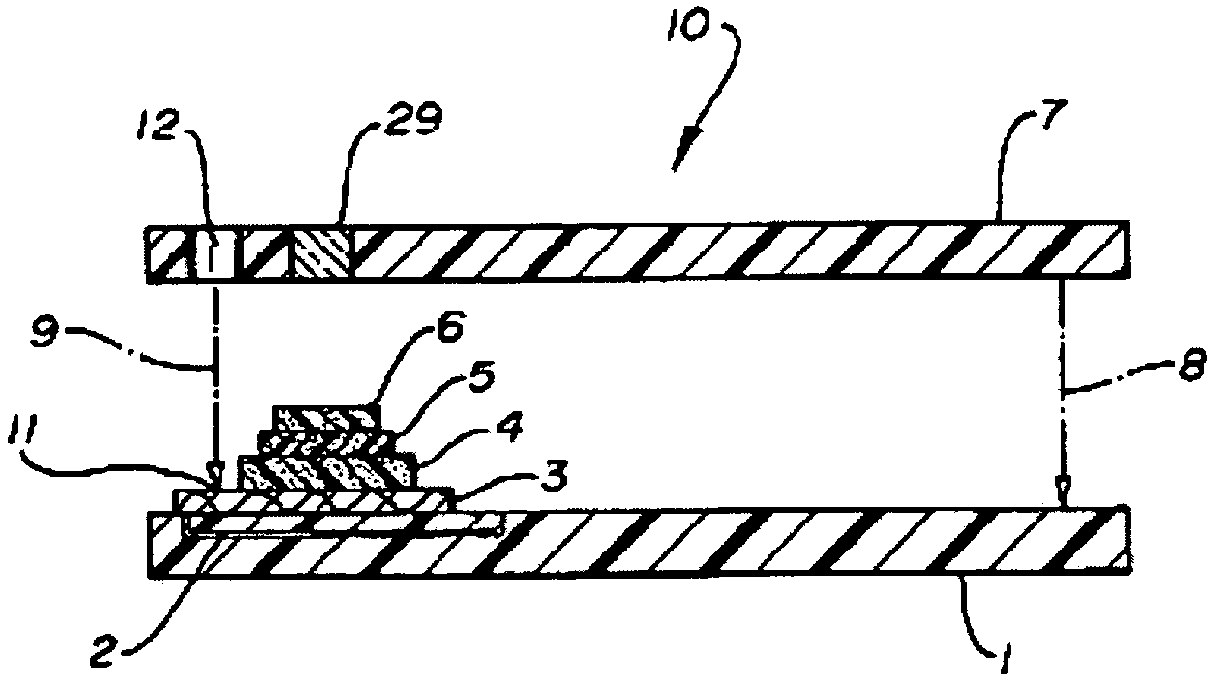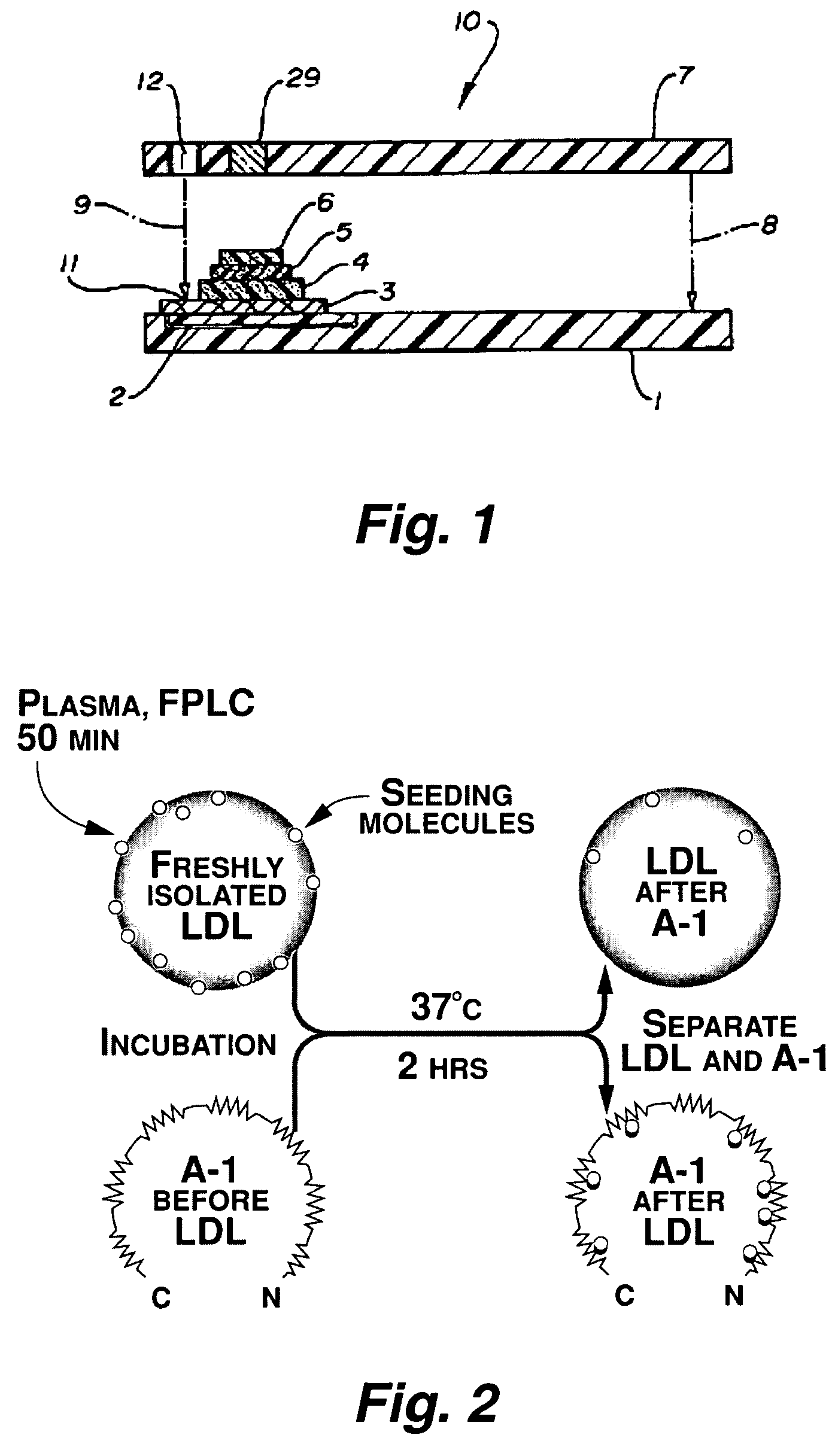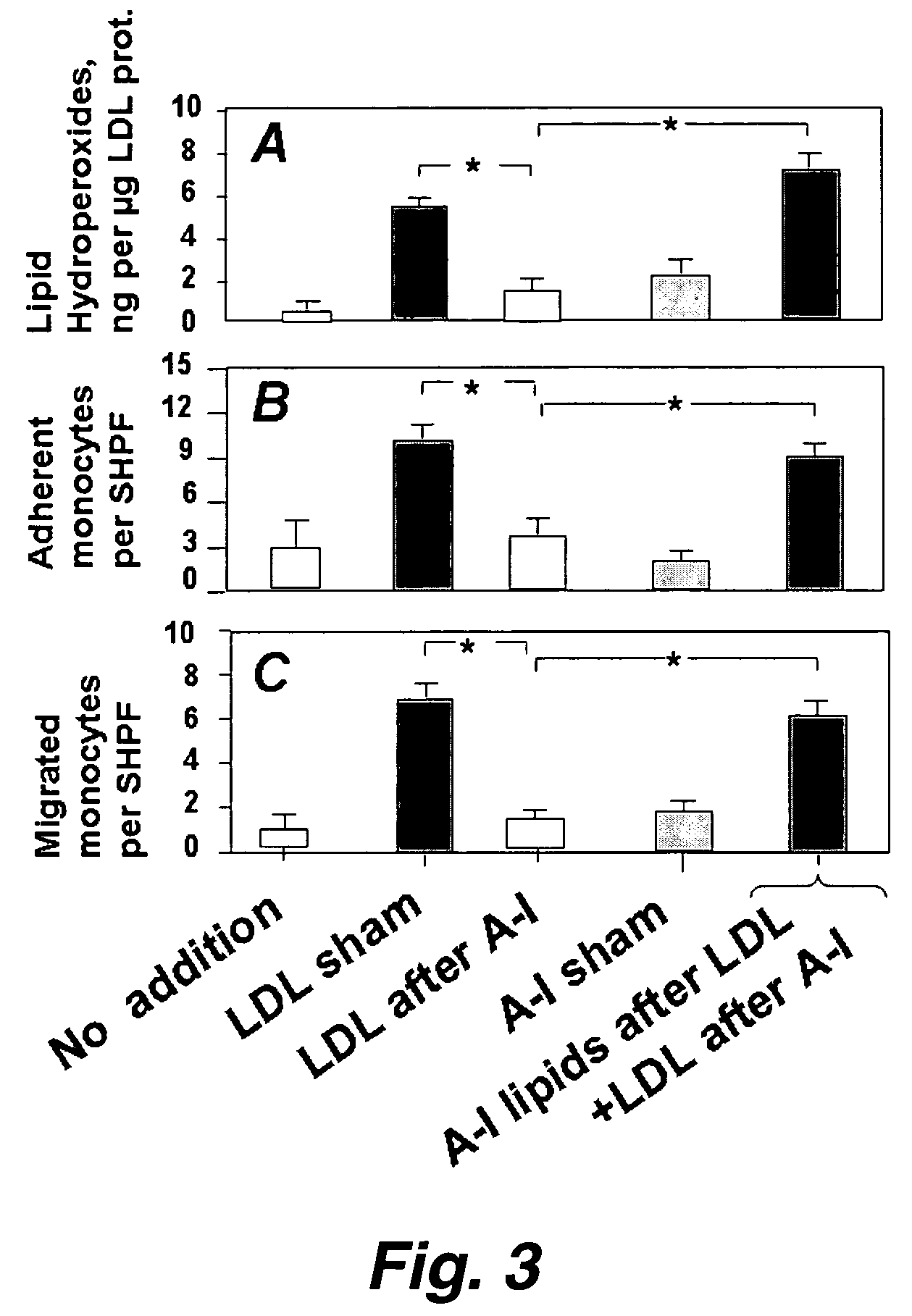Functional assay of high-density lipoprotein
a high-density lipoprotein and functional assay technology, applied in the field of atherosclerosis diagnosis, can solve the problems of poor prognostic indicators at an individual level, hdl and/or ldl measurements are leading causes cardiac disease is a leading cause of morbidity and mortality, so as to achieve high-efficiency assay, prevent oxidation, and reduce inflammation
- Summary
- Abstract
- Description
- Claims
- Application Information
AI Technical Summary
Benefits of technology
Problems solved by technology
Method used
Image
Examples
example 1
Normal HDL Inhibits Three Steus in the Formation of Mildly Oxidized LDL-Step 1
[0134]Apo A-I and an apo A-I peptide mimetic removed “seeding molecules” from human LDL and rendered the LDL resistant to oxidation by human artery wall cells. The apo A-I-associated “seeding molecules” included 13-hydroperoxyoctadecadienoic acid [13-HPODE] and 15-hydroperoxyeicosatetraenoic acid [15-HPETE]. LDL from mice genetically susceptible to fatty streak lesion formation was highly susceptible to oxidation by artery wall cells and was rendered resistant to oxidation after incubation with apo A-I in vitro. Injection of apo A-I (but not apo A-II) into mice rendered their LDL resistant to oxidation within 3 hours. Infusion of apo A-I into humans rendered their LDL resistant to oxidation within 6 hours. HDL and its associated enzyme paraoxonase (PON) also rendered LDL resistant to oxidation. We conclude that: (1) oxidation of LDL by artery wall cells requires “seeding molecules” that include 13-HPODE an...
example 2
Normal HDL Inhibits Three Steps in the Formation of Mildly Oxidized LDL- Steps 2 and 3
[0195]In this example, treatment of human artery wall cells with apo A-I (but not apo A-II), with an apo A-I peptide mimetic, or with HDL, or paraoxonase, rendered the cells unable to oxidize LDL. Addition of 13(S)-hydroperoxyoctadecadienoic acid [13(S)-HPODE] and 15(S)-hydroperoxyeicosatetraenoic acid [15(S)-HPETE] dramatically enhanced the non-enzymatic oxidation of both 1-palmitoyl-2-arachidonoyl-sn-glycero-3-phosphocholine (PAPC) and cholesteryl linoleate. On a molar basis 13(S)-HPODE and 15(S)-HPETE were approximately two orders of magnitude greater in potency than hydrogen peroxide in causing the formation of biologically active oxidized phospholipids (m / z 594, 610, and 828) from PAPC. Purified paraoxonase inhibited the biologic activity of these oxidized phospholipids. HDL from 10 out of 10 normolipidemic patients with coronary artery disease, who were neither diabetic nor on hypolipidemic m...
example 3
[0254]Cell-free Assay to Determine Inflammatory Properties of HDL
[0255]The inflammatory properties of HDL play a significant role in the development of atherosclerosis. We developed a new cell free assay (CFA) to distinguish the inflammatory properties of HDL. This new assay is a modified version of a CFA we previously reported (Navab et al. 2001; J Lipid Res. 42:1308-1317) based on the ability of HDL to inactivate oxidized phospholipids in LDL.
[0256]HDL was isolated from plasma or serum by Magnetic Bead Reagent (Polymedco). A standard mixture of LDL (90.0 μg / mL) and oxidized PAPC (62.5 μg / mL) were incubated (30 min) and the oxidation of the mixture was measured in the presence of DCFH-DA (dichlorofluorescein diacetate) that generates a fluorescent signal (485 / 530 nm) when oxidized. HDL was tested for its ability to inhibit the fluorescent signal, which in turn is a measure of HDL's ability to inactivate oxidized phospholipids in LDL.
[0257]Using this new method, we were able to accu...
PUM
| Property | Measurement | Unit |
|---|---|---|
| volume | aaaaa | aaaaa |
| time | aaaaa | aaaaa |
| body weight | aaaaa | aaaaa |
Abstract
Description
Claims
Application Information
 Login to View More
Login to View More - R&D
- Intellectual Property
- Life Sciences
- Materials
- Tech Scout
- Unparalleled Data Quality
- Higher Quality Content
- 60% Fewer Hallucinations
Browse by: Latest US Patents, China's latest patents, Technical Efficacy Thesaurus, Application Domain, Technology Topic, Popular Technical Reports.
© 2025 PatSnap. All rights reserved.Legal|Privacy policy|Modern Slavery Act Transparency Statement|Sitemap|About US| Contact US: help@patsnap.com



